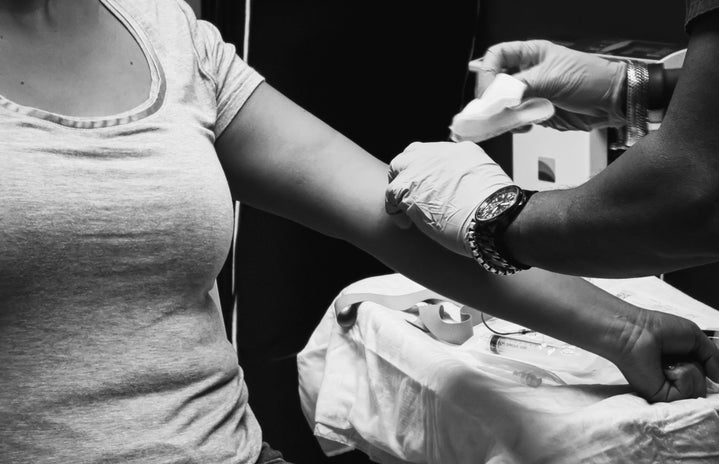The novel coronavirus that has swept the nation in the last year has caused innumerable damages to physical and mental health. With cases climbing daily and hospitals constantly treating new patients, it’s no wonder that in recent months, the United States’ supply of blood and organ donations has fallen to a dangerously low level.
Blood supplies were the first to decrease due to their immense popularity in various medical procedures. Donated blood is used to treat victims of many incidents, such as car crashes, progressing diseases and, of course, COVID-19. Donating blood is one of the least invasive medical procedures that someone can do, and donating even one pint of blood can save up to three individual lives, according to the American Red Cross. Normally, the United States keeps what is considered an eight-day supply on hand at any given time in case of emergencies. This means that at average blood consumption levels, it would take eight days for a local bank to exhaust their supply of blood.
Unfortunately, the coronavirus pandemic has drastically limited this supply. People are less likely to leave their homes to donate blood, and the amount of pop-up donation sites has decreased due to socialization fears during the pandemic. Even though doctors make sure not to infuse more blood than necessary into a sick patient, the surge in coronavirus cases has put a strain on the supply of blood needed for such procedures. Compared to what used to be an eight-day supply, the current on-hand blood supply has reached a level where supply and demand are almost equal. The current on-hand blood supply rests at one to two days of supply, according to US News.

Organ donations have also decreased during the pandemic. When a patient contracts coronavirus and dies, the vitality of the organs that can be transplanted is decreased due to the risks of exposure to the virus. Not only that, but surgeries have decreased in frequency during the pandemic.
Organs collected from deceased donors make up the vast majority of recovered organs. However, if these organs cannot be used due to risk of infection, supply of these organs drops. According to US News, the number of transplants using hearts, kidneys, livers or lungs from deceased donors has decreased 51 percent in the United States. In countries such as France, the donation decrease reached a whopping 90 percent. Not only that, many living potential donors are unwilling to risk exposure to COVID-19 during their hospital stays, and hospitals are similarly unwilling.

These numbers are a problem because they represent just one more casualty of medical care resulting from coronavirus. Since January of this year, people around the globe have been scared of the possible consequences of the virus. These fears are not unfounded, but they have made granting adequate medical care harder than ever before. With over 37,000 blood drives canceled in the past year, as well as the drastic decrease in viable organs for transplant, what can be done to save off the dwindling supply, especially given the uncertainty of the pandemic next year?
One of the easiest and least invasive ways to help is to seek out a blood donation center yourself. If you are healthy and willing to leave your home to donate, you can find a local donation center in your town by using the American Red Cross Find A Drive feature. To donate blood, you have to be in good physical health, meet height and weight requirements, and be able to carve out about an hour of time for the donation. You can also take pre-emptive steps and apply to become an organ donor. You can register to donate your organs by visiting the Donate Life website. In the event of your death, your healthy organs will be donated to someone who needs them to live.
It can be hard to know how you can make a difference during this pandemic. Wear a mask, social distance and consider making a blood donation or signing up to be an organ donor. Small steps like these can save countless lives.
Want to see more HCFSU? Be sure to like us on Facebook and follow us on Instagram, Twitter, TikTok, Youtube and Pinterest!



